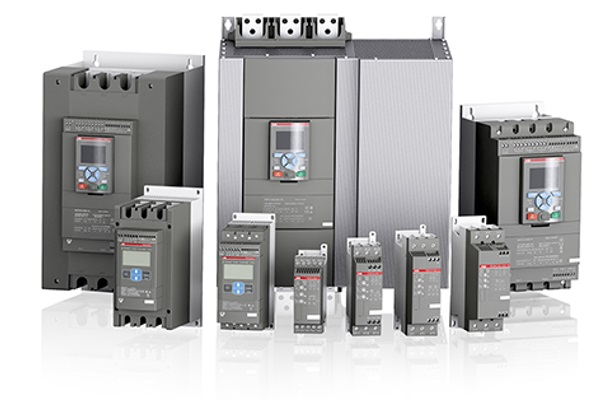What You Need to Know: Soft Starters for Industrial Motors
Driving motors is one of the most fundamental automation tasks, but understanding and selecting the proper motor soft starter for your application may require more investigation than you thought.
AC motors are a great way to provide motion to industrial equipment. They are commonly found on conveyors, mixers, and blowers.
Starting 3-phase Motors
As the name suggests, a soft starter is used to start the motor in a controlled fashion. You can’t regulate the running speed, but you can control how the motor begins so that the current draw is reduced and the motor starts more efficiently.
Selecting the correct starter for your application requires more knowledge than just the supply voltage and horsepower. While those parameters are essential, there are features of the application which also drive the selection process.

Figure 1. Starting and stopping motors is a balancing act between production speed and power efficiency. Image used courtesy of Adobe Stock
Electrical Power Consumption
The first criteria for choosing any starter is the electrical load, but this can be represented in a couple of ways. A common method is to use the rated horsepower of the motor or a maximum wattage, taking into account different voltages and currents.
The required horsepower of the motor should be printed on the motor dataplate, and usually the full load amperage (or FLA) is listed as well. The wattage can be calculated by multiplying the voltage and full load current draw. Some starters will provide data about the maximum allowable current, so it will be your responsibility to understand your motor’s current draw at full load.
Duty Cycle
The duty cycle is defined as the ratio of time when the motor is running over a given total elapsed time. For example, if the motor is running for 1 ms out of every 4 ms, that is a 25% duty cycle. 100% duty cycle is full running speed.
The duty cycle is important because the starting cycle of a motor is when the circuit will draw the most current. As the current draw rises, the heat of the components controlling the motor also rises. This heat will need to be dissipated, but if the ambient temperature is too high, the devices within the circuit will not be able to dissipate the heat fast enough. The starter will then have a maximum number of starts per hour, limited by the duty cycle. Analyze your application and determine the number of times the motor will need to be cycled to be sure the starter can handle that frequency.
A conveyor, for example, might have a rather high duty cycle depending on how it is controlled. Most conveyors have low friction belts that allow the pallet to slip when being held by a stop. In this case, the motor doesn’t need to be stopped unless there is an emergency. A mixer, on the other hand, might run for ten minutes and not start again for an hour, or run for three hours and not run again for eight hours. Each application will require an in-depth analysis of how many times that motor will be started in an hour to properly size the starter.
Ambient Temperature and Environment Conditions
The operating conditions of an electrical device will always play an important role in product selection, and soft starters are no different. Any electrical device will need to dissipate heat, which requires the ambient temperature to be less than that of the device to be cooled. If the ambient temp is near the device operating temp, and the number of starts per hour is near the rated maximum, the starter will almost certainly show signs of premature wear and failure.
Dusty or wet conditions will also affect your selection, as these conditions could void warranties, or result in damage to other electrical devices if the starter does not have the proper IP (ingress protection) rating.
Oversizing Motor Starters
In some situations, selecting a starter with higher-rated parameters is required. Situations might dictate the motor to start under full load or draw a large current for a long period of time during the starting cycle.
Applications which require many rapid start cycles might not give the starter enough time to cool down, and these would benefit from a larger starter. These situations require upsizing or oversizing the starter, which can be costly but will allow for special applications. A great step is always to consult suppliers or technical vendors when oversizing starters.
Soft Starter Manufacturers
The following list highlights just a few of the soft start manufacturers, each providing products with various ratings and capabilities.
Siemens
SIRIUS Series

ABB
PS Series Softstarts

Schneider Electric
Altivar Altistart Series

Eaton
(D)S Series Soft Starters

WEG
SS Series Soft-starter

DOLD
1-ph and 3-ph Softstarters

Rockwell Automation
Smart Motor Controller (SMC)

The above list is not listed by performance ranking, but rather simply provides a list of different manufacturers of motor soft starters. It also does not represent the entire list of all soft start manufacturers, but is designed to provide some references on where to learn more and compare products for your application. Always consult manuals, and suppliers for proper sizing or oversizing.





